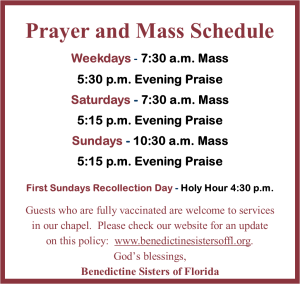 Have you ever met anyone, (or maybe been counted among those) who’ve found the Catholic doctrine of transubstantiation to be a bit hard to accept? Maybe just for a minute or two you may have wondered how Jesus could talk about eating his flesh and drinking his blood? At the words in this Gospel, so many of Jesus’ disciples abandoned him that Jesus asked the twelve if they also planned to quit.
Have you ever met anyone, (or maybe been counted among those) who’ve found the Catholic doctrine of transubstantiation to be a bit hard to accept? Maybe just for a minute or two you may have wondered how Jesus could talk about eating his flesh and drinking his blood? At the words in this Gospel, so many of Jesus’ disciples abandoned him that Jesus asked the twelve if they also planned to quit.
So, how did the early Christians interpret Jesus’ challenging words? History tells us that the pagan Romans made charges against the Christians for cannibalism. They had heard that when these people met they ate and drank human blood. Not many Christians themselves questioned the real presence of Christ’s body and blood in the Eucharist till the Middle Ages. In trying to explain how bread and wine are changed into the body and blood of Christ, several theologians went astray and needed to be corrected by Church authority. Then St. Thomas Aquinas came along and offered an explanation that became classic. In all change that we observe in this life, he teaches, appearances change, but deep down, the essence of a thing stays the same.
St. Thomas said the Eucharist is the one instance of change we encounter in this world that is exactly the opposite. The appearances of bread and wine stay the same, but the very essence or substance of these realities, is totally transformed. What was once bread and wine are now Christ’s body and blood. A unique word “transubstantiation” was coined, and remains to this day, to an effort to explain the miracle of the changing of bread and wine into the Body and Blood of Jesus.
At a Eucharistic celebration, the priest, repeats the words of Jesus: “This is my Body, This is my Blood.” Doesn’t this remind you of the words in Genesis: “God said: let there be light and there was light.” It is no harder to believe in transubstantiation than to believe in the miracle of Creation.
Such an awesome gift deserves its own feast. And that’s why, back in the days of Thomas Aquinas and St. Francis of Assisi, the Pope decided to institute the Feast of Corpus Christi.
Pondering the significance of this feast it strikes me that with Christmas we are touched with joy and awe at the birth of the God-man Jesus. Even in the midst of a pandemic, at Easter we explode with ALLELUIA at the resurrection of our Savior. The Ascension leaves us quietly looking upward, outward waiting in expectation for “what’s next?” Then, comes the solemnity of the Trinity – the mystery that baffles us … that God is so great, so awesome that only in three persons can all the divine manifestations be expressed. And, today, the solemnity of the Body and Blood of Christ – this touches, awakens in us feelings we can hardly express – that our God, our Jesus, our Savior would choose to gift us in such a personal, intimate way! Our Creator-God chooses to be “assimilated within the body of the creature.” His body and blood become, over and over, absorbed into my body – His blood courses in my veins … invading every fiber of my being. When the priest (or Eucharist minister) presents the host or chalice, looks us in the eye and says: “Body of Christ!” “Blood of Christ” – we are overcome with the awesomeness of this gift – words fail us. All we can manage to say is “AMEN” – so be it – AMEN!
~Reflection by Sisters Roberta Bailey, OSB, Prioress
Continue Reading

